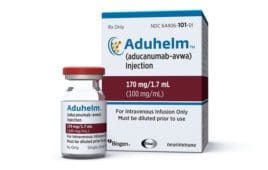
Why do some people comfortably walk between skyscrapers on a high-wire or raft the Niagara Falls in a wooden barrel whereas others freeze on the mere thought of climbing off escalators in a shopping mall? In a new study, scientists have found that a certain type of cells in the hippocampus play a key role.
People are very different when it comes to trying dangerous or exhilarating things. Even siblings can show dramatic differences in risk-taking behavior. The neural mechanisms that drive risk-taking behavior are largely unknown. However, scientists from the Department of Neuroscience of Uppsala University in Sweden and the Brain Institute of the Federal University of Rio Grande do Norte in Brazil have found that some cells in the hippocampus play a key role in risk taking behavior and anxiety.
In an article published in the journal Nature Communications the authors show that neurons known as OLM cells, when stimulated, produce a brain rhythm that is present when animals feel safe in a threatening environment (for example, when they are hiding from a predator but aware of the predator’s proximity). The study, produced by Drs. Sanja Mikulovic, Ernesto Restrepo, Klas Kullander and Richardson Leao among others, showed that anxiety and risk-taking behavior can be controlled by the manipulation of OLM cells. To find a pathway that quickly and robustly modulates risk-taking behaviour is very important for treatment of pathological anxiety since reduced risk-taking behavior is a trait in people with high anxiety levels.
Adaptive (or normal) anxiety is essential for survival because it protects us from harm. Unfortunately, in a large number of people, anxiety can be dysfunctional and severely interfere with daily life. In these cases, doctors often rely on antidepressants to help patients recover from the dysfunctional state. However, these drugs act in the entire brain and not only in the areas where it is needed and may therefore have severe side-effects. Thus, to act in a single brain region and in a very specific group of cells to control anxiety may be a major breakthrough in treating anxiety and associated disorders like depression. Another interesting finding in the study is that OLM cells can also be controlled by pharmacological agents. In the past, the same group of scientists have found that OLM cells were the ‘gatekeepers’ of memories in the hippocampus and that these cells were very sensitive to nicotine.
“This finding may explain why people binge-smoke when they are anxious”, says Dr. Richardson Leao, researcher at the Brain Institute of the Federal University of Rio Grande do Norte and Uppsala University.
The participation of the hippocampus in emotions is much less studied than its role in memory and cognition. In 2014, for example, the Nobel prize was awarded for the discovery of “place cells” that represent a biological GPS and underlie the memories of where we are located in our surroundings. In the past decade, scientists have started to appreciate the role of the hippocampus also in regulating emotions.
“It is fascinating how different regions of the same brain structure control distinct behaviours and how they interact with each other. Identifying specific circuits that underlie either cognitive or emotional processes is crucial for the general understanding of brain function and for more specific drug development to treat disorders,” says Dr. Sanja Mikulovic, Uppsala University.
The discovery of these neurons and their role in anxiety and risk-taking may open a path for the development of highly efficient anxiolytics and antidepressants without common side-effects, such as apathy.
SOURCE: Uppsala University
Filed Under: Neurological Disease




